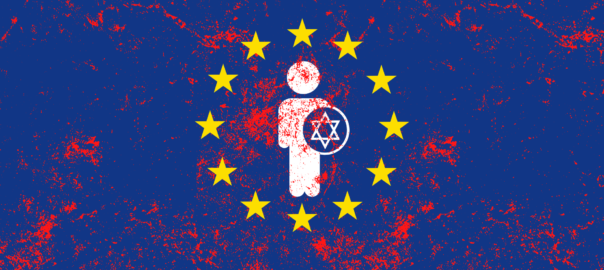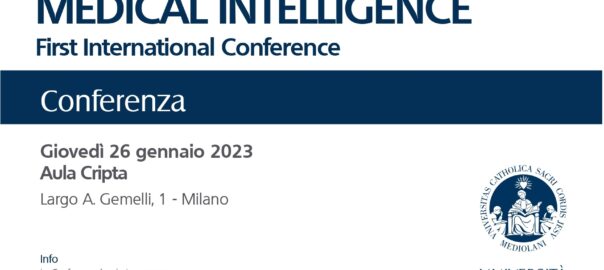Venerdì sera una cellula di jihadisti del gruppo Tehreek-e-Taliban Pakistan (TTP, i meglio noti “Talebani pakistani) ha lanciato un attacco suicida contro il quartier generale della polizia di Karachi, un complesso strettamente sorvegliato che ospita dozzine di edifici amministrativi e residenziali. Centinaia di agenti vivono infatti all’interno del compound con le loro famiglie. I suoni di spari ed esplosioni hanno scosso la città pakistana per diverse ore e soltanto in tarda nottata è arrivata la conferma da parte delle autorità locali della fine delle operazioni di “pulizia” che hanno coinvolto polizia, esercito ed anche forze paramilitari. Continue reading
Saif al-‘Adl nuovo leader di Al-Qaeda: prime considerazioni – by Sara Brzuszkiewicz
Risale a due giorni fa la conferma da parte del Dipartimento di Stato statunitense di quanto asserito poco prima dalle Nazioni Unite: Saif al-‘Adl, situato in Iran, è l’attuale leader di Al-Qaeda. Il report dell’Onu spiega che l’idea dominante proveniente dalle intelligence dei Paesi membri è proprio che sia al-‘Adl, egiziano di 62 anni, il successore di Ayman al-Zawahiri. Continue reading
Earthquake in Turkey: natural disasters from a security perspective – by Maria Alvanou
The recent earthquake in Turkey has created a wave of international sympathy, with people sending help from countries all over the world. Greece, a country whose relations with Turkey have been characterized by longstanding (and recently escalating) tension, was one of the first to send help and this may better the situation between the two countries[1]. At the same time inside Turkey, everyday people but also celebrities are showing solidarity[2]. Continue reading
PMC Wagner Propaganda Ecosystem – by Giulia Porrino & Federico Borgonovo
The Wagner propaganda ecosystem is fragmented and made up of different actors that we have categorized. We identified a “top-down” propaganda architecture, composed of different materials disseminated by the leadership of the Wagner company, exploiting traditional media such as television, movies, events, and newspaper. Examples of this are the construction of the Wagner Center in St. Petersburg and movies produced by Aurum Production owned by Prigozhin.
Continue readingTowards a more progressive approach to studying the Salafi-Jihadi movement – by Ali Fisher
The ongoing struggle against the Salafi-Jihadi movement will require reflection on multiple levels to achieve a genuinely progressive and evidence-based approach. This reflection will focus on developing an authentic understanding of:
- Their core purpose – their theology expressed in hundreds of thousands of pages of text, along with days of audio and video content.
- The strategic communication approaches which underpin their da’wa; the missionary work often referred to by Western research as recruitment or radicalization. Such understanding will include how Salafi-Jihadi groups exploit the internet for strategic communication.
Holocaust Remembrance Day attack in Jerusalem: Comments from a European security perspective – by Maria Alvanou
The phrase “one man’s terrorist is another man’s freedom fighter” has been used in the discussion for decades now regarding whether violence conducted by Palestinians against Israelis constitutes terrorism or not. Different geopolitical interests, ideological approaches, historical accounts, and even personal affiliations, in conjunction with the complexity of the Middle Eastern issue and the grievances people have been facing in this area, have led to different characterizations. Some have called them terrorism, others insurgency or resistance. And indeed, from an operational point of view, when attacks have been aiming at military targets, things can be blurred. However, there have been some true textbook cases of terrorism. Such a case has been the one of January 27th, 2023, that has led UN Spokesperson, António Guterres to state: “There is never any excuse for acts of terrorism. They must be clearly condemned and rejected by all.”[1]
Continue readingBeyond Remembrance. Traces of anti-Semitism in the current communication spaces – by Giacomo Buoncompagni
The examples of genocide or individual cases of hate crimes are rather recent episodes and mainly concern the re-emergence of attitudes of racism and xenophobia. Among the phenomena of hostility and aggression towards ‘others’, anti-Semitism is a particular phenomenon that has been growing in recent years throughout Europe. It is in fact an ancient hatred, the ‘longest’ in the history of mankind, expressed towards Jews as such (or as Jean-Paul Sartre already observed, often even in the absence of Jews), but which today takes on new faces and characters depending on the social, cultural, and political context in which we live. Especially in the period around 27 January each year, Remembrance Day, there are punctual acts of anti-Semitism, even in Italy.
Continue readingEurope: knife attacks continue – by Sara Brzuszkiewicz
In one day – on January 25 – two knife attacks took place in Europe.
In Germany, a knife-wielding man – allegedly of Palestinian origin – has fatally stabbed two people and injured seven others on a train in northern Germany before being grabbed by passengers and arrested by police. The event occurred shortly before a regional train traveling from Kiel to Hamburg arrived at the Brokstedt station. While Germany has not mentioned the word terrorism yet, the case of Spain seems to be slightly clearer.
Continue readingLaser-Nazi Propaganda– By Federico Borgonovo & Silvano R. Lucini
Versione italiana e English version.
Versione italiana – La notte di Capodanno del 2022, sull’Erasmus Bridge a Rotterdam sono stati proiettati tramite un proiettore laser portatile degli slogan suprematisti: “happy white 2023“, “white lives matter” e “black pete did nothing wrong“.
Continue readingTerrorism in 2023: Unpredictability Ahead – by Sara Brzuszkiewicz
Because of terrorism’s core purpose of instilling fear, its characteristics and features are not always foreseeable. When it comes to 2023, however, we should expect it to be the most unpredictable year in recent times. Ideological patchworking and mixing, reciprocal influencing and democratization of the threat: all the major trends that might prevail in the next few months pivot around chaos and unpredictability. Continue reading
Ripensare la definizione di terrorismo – by Marco Lombardi
Il nuovo anno si avvia con alcuni eventi che ripropongono il terrorismo all’attenzione delle agenzie di sicurezza e dei media. Soprattutto, si tratta di eventi che reclamano una riflessione sulla minaccia specifica che è sempre consistente sul piano fattuale, fluida e pervasiva, ma bisognosa di una ridefinizione sul piano teorico e interpretativo. Quanto è successo in questi ultimi giorni è sotto gli occhi di tutti.
Continue readingMedical Intelligence – Prima Conferenza Internazionale
Medical Intelligence: First International Conference – Milano 26 gennaio 2023 – Università Cattolica del Sacro Cuore, Università Vita-Salute San Raffaele, Università Campus Bio-Medico, Società Italiana di Intelligence, Società Italiana di Medicina Legale e delle Assicurazioni, NATO Rapid Deployable Corps – Italy.
Iscrizioni: MedInt@itstime.it Continue reading












